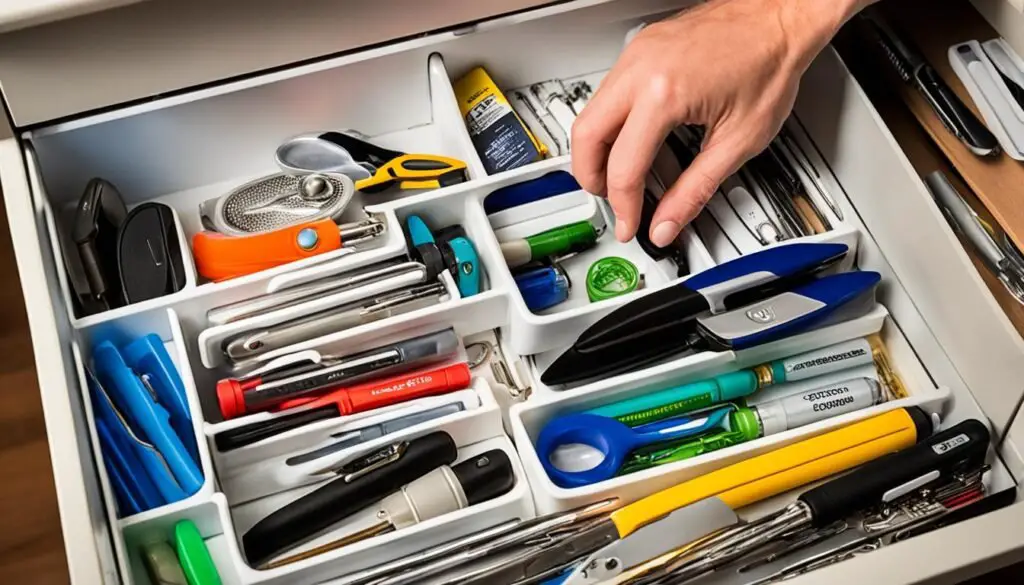Did you know that a lost hamster can survive for about 2-3 days without food? That’s right, these tiny furry creatures have a limited window of time to be found and rescued before their survival becomes critical. Whether your hamster has escaped or gone missing, it’s essential to understand the vital factors that can increase its chances of survival and ensure a successful reunion.
In this comprehensive guide, we will explore the lifespan of a lost hamster, effective techniques for finding and rescuing it, and measures to prevent future escapes. From providing the right food and water to implementing search strategies and hamster tracking methods, we’ve got you covered.
So, if you’re ready to enhance your knowledge on lost hamster survival time, hamster escape prevention, and locating a runaway hamster, let’s get started!
How Long Can a Lost Hamster Survive Without Food and Water?
A lost hamster can survive for about 2-3 days without food, but dehydration poses a more immediate threat.
It’s important to provide a regular supply of fresh food and water to a lost hamster to ensure its well-being.
- Hamsters have fast metabolisms and require a balanced diet to thrive.
- Taking into account their natural foraging behaviors and hoarding instincts can help increase their chances of survival while lost.
During their time in the wild, hamsters will search for food and water sources. However, their small size and vulnerability make them susceptible to dehydration, especially in hot climates or dry surroundings. A consistent supply of fresh water is crucial to their survival.
Foraging Behavior and Hoarding Instincts
Hamsters are natural foragers, and their survival instincts kick in when they are lost. They will explore their surroundings in search of food, using their keen sense of smell to guide them. They may nibble on plants, roots, and even small insects if necessary.
Additionally, hamsters have a hoarding instinct, which means they will gather food and store it in hidden places. This behavior helps them survive during periods of scarcity. If a lost hamster finds a food source, it will try to hoard as much as possible to sustain itself until it can find more or until it is rescued.
By understanding and leveraging these natural behaviors, you can improve the chances of locating a lost hamster. Provide enticing and familiar food options, such as their favorite treats or fresh fruits and vegetables, near possible hiding spots. This may entice the hamster to come out of hiding or prompt it to follow the scent trail back to its cage.

Remember, the well-being and safety of a lost hamster should always be a priority. By being proactive in offering food and water, you can increase the chances of a happy reunion with your furry friend.
Finding a Lost Hamster: Search Strategies and Hamster Tracking Methods
When you find yourself in the unfortunate situation of a missing hamster, it’s crucial to implement effective search strategies and hamster tracking methods to increase your chances of locating your furry friend. Here are some helpful tips to aid you in your search:
- Set up live traps: Consider placing live traps in strategic locations around your home. These traps should be baited with enticing foods that your hamster is likely to be attracted to. Be patient and check the traps regularly.
- Use familiar scents and objects: Hamsters have a strong sense of smell, so it can be beneficial to place items with familiar scents, such as bedding or toys, near the potential hiding spots. This can help attract the hamster and encourage it to come out of hiding.
- Secure and safe search techniques: When searching for your lost hamster, it’s important to close off any potential escape routes and secure the environment. Block off small spaces and crevices where your hamster might squeeze into and ensure doors and windows are closed to prevent further escape.
- Enlist the help of others: Don’t hesitate to reach out to friends, family, and neighbors for assistance in your search efforts. More pairs of eyes can increase the chances of spotting your elusive hamster.
Remember, finding a missing hamster requires patience and persistence. By incorporating these search strategies and hamster tracking methods, you’ll be one step closer to reuniting with your beloved pet.

Preventing Hamster Escapes and Ensuring a Safe Environment
To prevent hamster escapes and ensure a safe environment for your furry friend, there are important measures you can take. By implementing these precautions, you can minimize the risk of your hamster venturing out and getting lost.
1. Secure the Hamster’s Cage
Start by ensuring that your hamster’s cage is secure. This means using sturdy latches or locks to prevent any accidental openings. Hamsters are known to be clever escape artists, so it’s important to regularly check the cage for any signs of wear or weak spots that hamsters can exploit.
2. Choose Escape-Proof Bedding and Nesting Materials
When setting up your hamster’s habitat, opt for escape-proof bedding and nesting materials. Avoid materials that can be easily torn apart or used to create an improvised ladder for escape. Look for options that are specifically designed to keep hamsters contained safely within their enclosures.
3. Check for Potential Escape Routes
Regularly inspect the surrounding area of your hamster’s cage for any potential escape routes. Hamsters are naturally curious and can squeeze through small gaps or openings. Seal off gaps around walls, floors, or corners to prevent your hamster from accessing these areas.
4. Provide a Comfortable and Stress-Free Habitat
Creating a comfortable and stress-free habitat is essential for your hamster’s well-being. Stress can negatively impact their feeding habits and overall health. Make sure to provide ample hiding spots, toys, and enrichment activities to keep your hamster mentally stimulated and content.
By following these steps and ensuring a secure environment, you can greatly reduce the likelihood of your hamster escaping and getting lost. Remember, a safe and happy hamster is a healthy hamster!
Tips for Rescuing a Lost Pet Hamster
Rescuing a lost pet hamster can be a challenging task, but with patience, perseverance, and the right techniques, you can increase your chances of locating and safely rescuing your furry friend. Here are some helpful tips:
- Set up humane live traps: One effective method for capturing a runaway hamster is to set up humane live traps. These traps are designed to safely capture the hamster without causing any harm. Place enticing bait, such as their favorite treats or a small amount of peanut butter, inside the trap to attract the hamster.
- Create a safe and calm environment: Hamsters are naturally curious creatures, but they can also be skittish and easily frightened when they’re lost. To increase the chances of luring your hamster out of hiding, create a safe and calm environment. Close off any potential hiding spots, minimize loud noises, and ensure there are no sudden movements or disruptions. This can help your hamster feel more secure and encourage them to come out of hiding.
- Use enticing bait: Along with the live traps, using enticing bait can also help attract your hamster. Hamsters have a keen sense of smell, so using strong-smelling food, like pieces of fruit or vegetables, can help grab their attention. Place the bait near the trap to entice the hamster to come closer.
- Avoid excessive handling: It’s important to remember that lost hamsters may be scared, stressed, or disoriented. To avoid causing further distress, it’s best to avoid excessive handling during the rescue process. Instead, allow the hamster to enter the live trap or seek refuge in a safe container on their own accord.
- Provide proper care once rescued: Once you successfully rescue your hamster, it’s crucial to provide them with the proper care they need. Place them back in their secure and comfortable cage, ensure they have fresh water and food, and give them some time to settle back into their familiar environment. Keeping a close eye on their behavior and health is also essential to ensure they recover from their ordeal.
Coping with the Loss of a Hamster
Losing your beloved pet hamster can be an incredibly difficult experience, and it’s natural to feel a sense of grief and sadness. Coping with the loss of a hamster involves acknowledging and processing these emotions, while also finding ways to honor the special bond you shared.
One helpful way to cope with the loss is by talking to friends and family about your feelings. Sharing your memories and emotions with loved ones who understand and empathize can provide comfort and support during this challenging time. It’s important to remember that you are not alone in your grief.
Writing can also be a therapeutic outlet for navigating the emotions that come with losing a hamster. Consider journaling about your experiences, capturing cherished memories, or even writing a letter to your beloved hamster. This process can help you express your emotions and find solace in the written word.
Additionally, accessing pet loss support resources can be incredibly beneficial. There are numerous online communities, forums, and hotlines dedicated to helping individuals cope with the loss of a pet. Connecting with others who have gone through similar experiences can provide a sense of understanding and comfort.
Creating a memorial for your hamster can also aid in the healing process. This can be as simple as setting up a small display with your hamster’s favorite toys, photos, and a heartfelt note. Taking time to remember the positive memories you shared can bring comfort and allow you to honor the special bond you had with your hamster.
Remember, grieving the loss of a pet hamster is a personal and unique process. Allow yourself time to heal and be patient with yourself as you navigate the emotions that come with this loss. By seeking support, expressing your feelings, and memorializing your hamster, you can find solace and cherish the memories you shared together.
